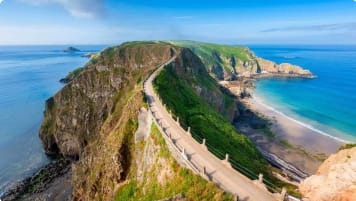Channel Islands; wildflowers, potato peel pies & rebels
Get ready to explore the Channel Islands Jersey, you say? Aren’t they the shirts footballers wear? Think again, traveller. Picture a smattering of tiny islands, a mere stone’s throw from England and France, peppered with…
8 Jun 18 · 8 mins read
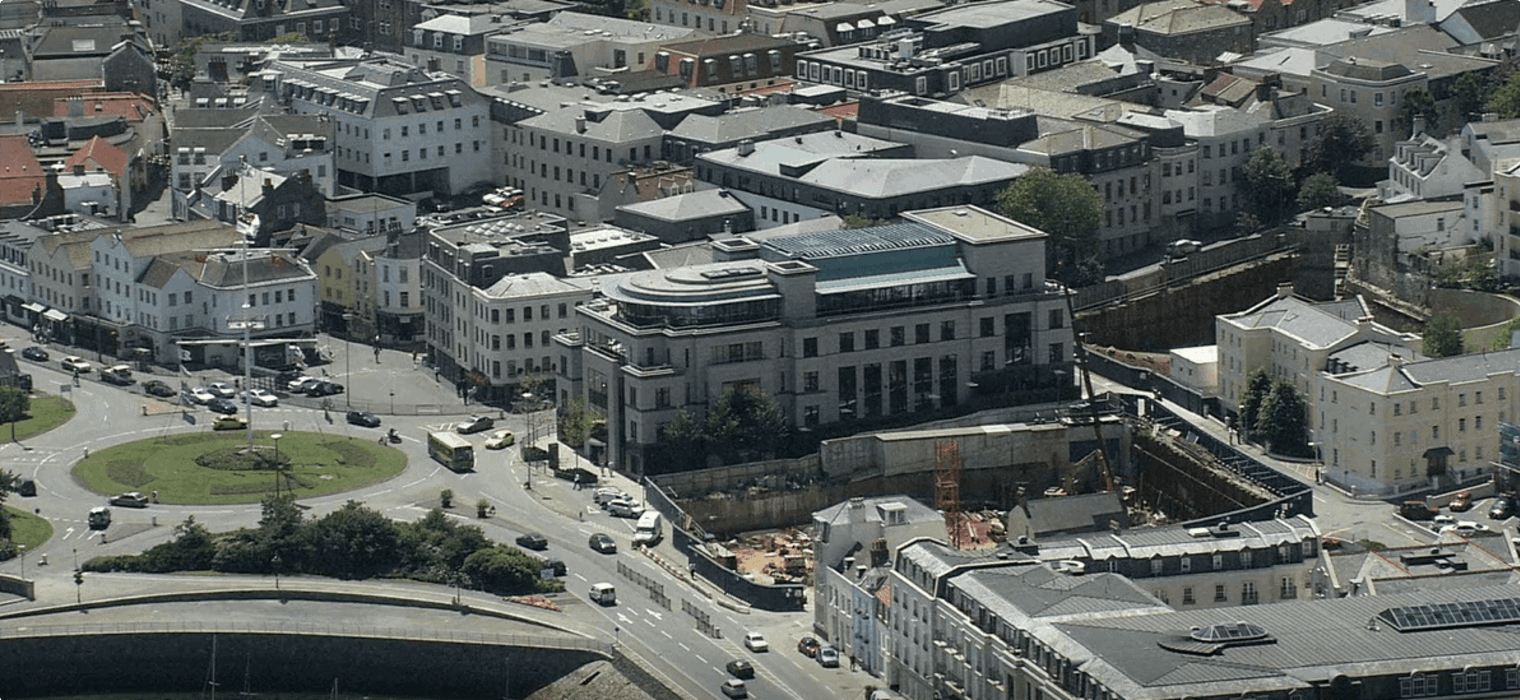
Get ready to explore the Channel Islands
Jersey, you say? Aren’t they the shirts footballers wear? Think again, traveller. Picture a smattering of tiny islands, a mere stone’s throw from England and France, peppered with charming, old-world villages, glorious wildflowers, exquisite coastlines and incredible bird life.
A place where ‘politeness’ is a way of life, where people get around in horse-drawn carts and all the post boxes are painted blue. Not sold? Why not head to your local cinema and check out The Guernsey Literary and Potato Peel Pie Society, a delightful film set almost entirely on this little archipelago in the English Channel. Among other things, you’ll get a sense of Guernsey’s incredible natural beauty and its surprisingly turbulent history.
Odyssey Traveller organises small group tours to the Channel Islands, one of Europe’s hidden gems.

Guernsey lies to the north
Guernsey is the name given to the northern portion of the Islands, a lovely collection of maritime refuges just off the coast of Normandy. Strangely, it is both a part of the United Kingdom and, at the same time, not quite. Guernsey is known as a ‘Bailiwick’ – a self-governing British Crown dependency with its own parliament, its own government and its own laws. Culturally, however, it is very British. Locals, for example, make a big deal of politeness. All cars have equal rights of way at intersections. The speed limit is a meandering 35 mph in the countryside and 25mph in the town. Towns and villages contain narrow winding laneways called ‘Ruettes Tranqilles’, where pedestrians, cyclists and horse riders have priority. In fact, horses are still a major mode of transport on many of the islands.
Jersey is close to France
Jersey. Surely that is the shirt a footballer wears? Well, almost. Knitted jumpers were once called ‘jerseys’ when they were made with Jersey wool. These days, while you won’t see Cristiano Ronaldo prancing about in a knitted jumper, the name endures.
Jersey is the biggest of the Channel Islands (though still smaller than Greater London), and is closer to France than Britain. Situated just 19 miles off the French coast, the island’s street names reflect its Norman-English history. The exiled Charles II was proclaimed King of England on the island in 1649. As a gesture of thanks, he awarded some American colonies to Jersey’s bailiff. These colonies became known as – drumroll please – ‘New Jersey’.
The native dialect, a derivative of Norman French known as Jerriais, is still spoken by locals. It became particularly important during the German Occupation as the islanders were able to communicate with each other without being understood by their captors. The 1990s British police drama Bergerac was also set on Jersey.
Discovering Bailiwicks
The Channel Islands encompass two bailiwicks, Guernsey is one, the other being known, somewhat confusingly, as Jersey.
Jersey is the biggest island in the archipelago, and the most heavily populated. The neighbouring bailiwicks have been administered separately since the 13th century, and each have their own independent laws, traditions, dialects, elections, and representative bodies.
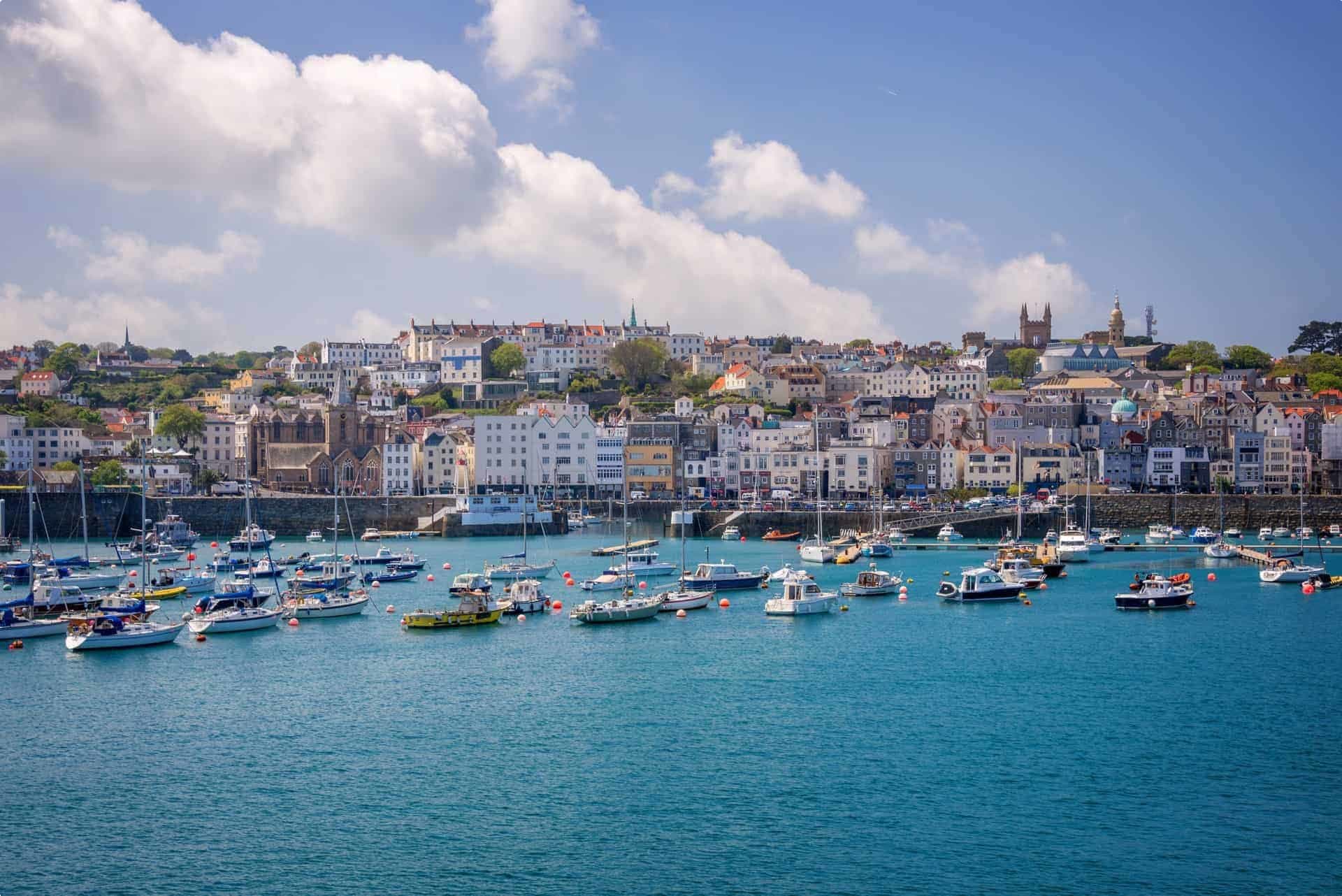
Early history of the Channel Islands
The name ‘Guernsey’ has its origins in Old Norse, a language spoken by inhabitants of Scandinavia and its overseas settlements between the 9th and 13th centuries AD. Human settlements on Guernsey date back over 5000 years, near the end of the last ice age when the islands were formed by the rising sea levels that created the English channel. Later, like much of Europe, the islands were settled and controlled by the Roman Empire.
During the middle ages, the islands were placed under the control of William I of Normandy. In 1204, the English king John ceded the continental portion of Normandy to France, the islands remained part of the kingdom of England. To this day, Guernsey and the other Channel Islands represent the last remnants of the medieval duchy of Normandy. Guernsey and Jersey’s legal systems even originate in Norman Customary Law, adapted over the years with principles taken from English common law.
However, it has not been a uniformly peaceful historical journey for this picturesque archipelago. The islands were repeatedly invaded over the centuries, and for a while even provided a base for pirates during the Hundred Years War.
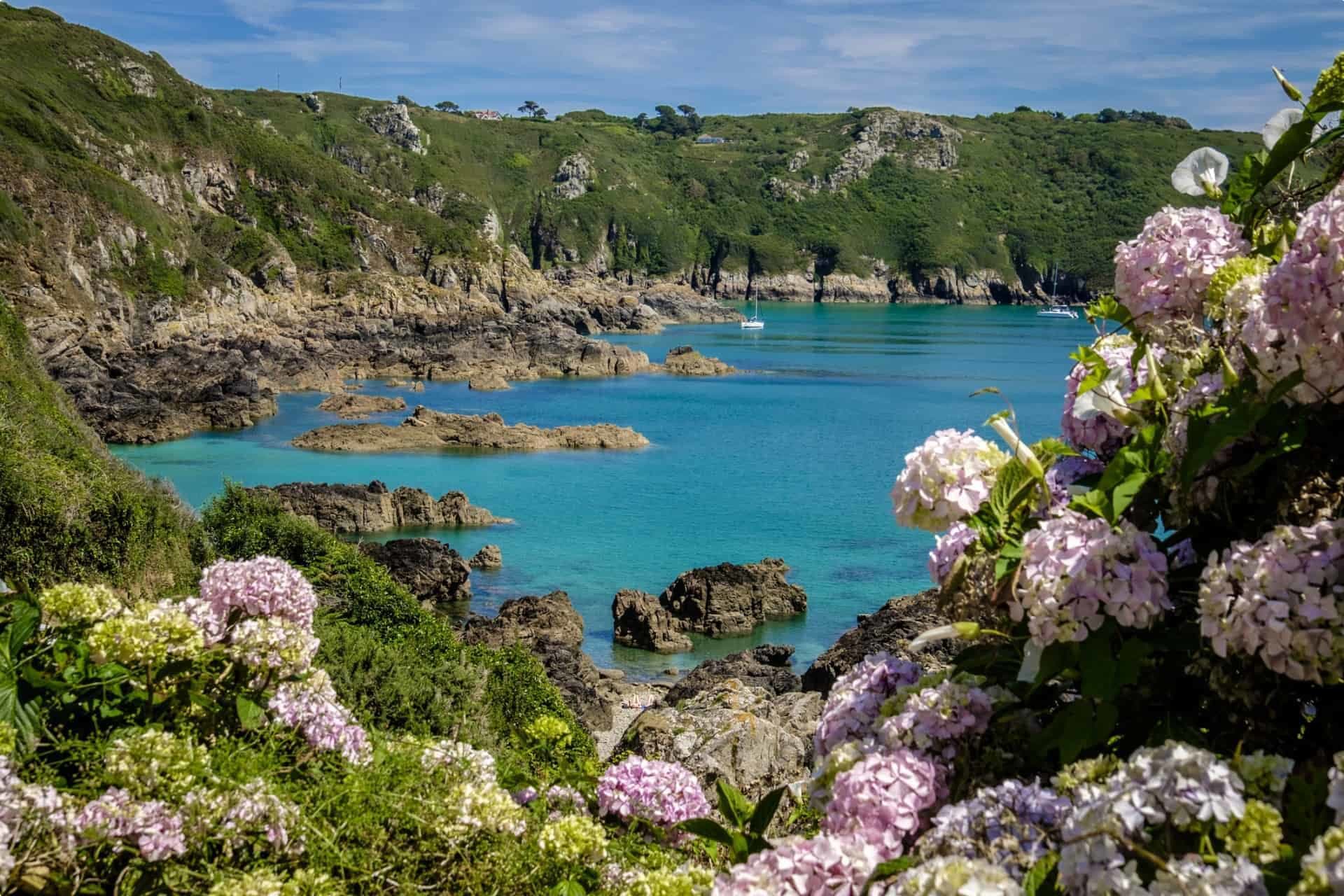
Artist’s idyll
The peacefulness and natural beauty of the Channel Islands have long made them a haven for European artists, writers and poets. The French novelist Victor Hugo lived in Guernsey from 1865 after being exiled from his native country for his vocal opposition to the Second Empire of Napoleon III. It became his home for the next 15 years and he referred to it as his ‘rock of hospitality and freedom’. Sitting on the fourth floor of his Guernsey home, with a view across the water to his homeland, he poured his energy into his novels, eventually producing his epic Les Miserables. His home, Hauteville House, is an elaborately decorated mansion that is open to the public. There is even a statue of Hugo among the island’s beautiful Candie Gardens. In 1883, Hugo’s fellow Frenchman, the impressionist painter Renoir, spent over a month on Guernsey and painted 15 pictures of the island.
Languages have been lost from the Channel islands
Though English is most commonly spoken on Guernsey, this is a relatively recent development.
Just 200 years ago, very few people spoke English on the islands, preferring French or a variety of dialects. Major dialects include Guernesiais (a variety of Norman) and Sercquiais (spoken by some people on Sark). French was the official language of Guernsey until 1948. Today, English is the official language, and French is used for administration.
On Jersey the native dialect, known as Jerriais (‘Jersey French’), is more prominent and has long been the dominant language of the bailiwick. However, in recent times its use has been in decline, along with a decline in the use of French. The island’s newspaper, the Jersey Evening Post, still runs some articles in Jerriais each week.
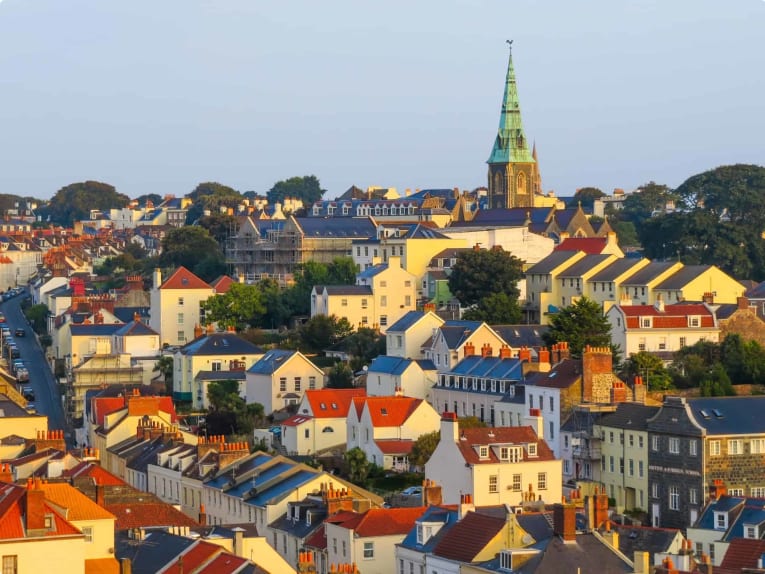
Darkest hour was in early 1940
In The Guernsey Literary and Potato Peel Pie Society, a writer named Juliet (played by Lily James) moves to Guernsey and discovers the traumatic history of the German occupation of the islands during the Second World War.
In 1940, the Germans bombed and eventually occupied the Channel Islands. All men of military age were evacuated just prior to the invasion, and the remaining inhabitants were left to endure nearly five years of military occupation. A curfew was imposed between 11pm and 5am, locals were required to carry ID cards and their cars were requisitioned by the Germans. German currency replaced the British pound, newspapers were printed in German and schools were ordered to teach it.
The German forces saw the Channel Islands as part of their Atlantic Wall defence and planned to turn them into a series of impregnable fortresses. Using the forced the labour of hundreds of Channel Islanders, an elaborate subterranean network of bunkers, tunnels and even hospitals was built using island labour. Some islanders defied the Germans and worked to help feed starving slave labourers and assist their Jewish neighbours. After the D-Day landings, food lines were cut and islanders began to starve. The Germans eventually allowed the Red Cross to deliver food, saving many lives. The British finally liberated the Islands on 9 May 1945.
After the war, many locals began to collect artefacts and mementoes from the occupation. As these collections grew, a number of museums sprung up to accommodate them. For example, be sure not to miss La Valette Underground Military Museum, where visitors can walk the tunnels built by the labourers during the war. Other museums on Guernsey include the German Naval Signals HQ and the German Occupation Museum.

Farming
Channel Island farmers are famous for Jersey dairy cattle, the only breed allowed on the island since 1789. Many farmers breed these cows for export, rather than for milk! Guernsey and Jersey cows produce a rich creamy milk, perfect for dairy cream, butter, cheese and ice cream.

Jersey Royal potatoes are another famous export. The European Union even designates that these potatoes need to be grown on the island to bear this name. They taste delicious because they are fertilised with seaweed, known as ‘vraic’, harvested from the island’s beaches. This technique dates back to the 12th century.
Majestic Castles
Jersey’s coastline is dotted with a number of spectacular medieval castles. Mont Orgueil Castle has loomed over the fishing port of Gorey for more than 800 years. Visitors can explore its vast network of staircases, turrets and secret rooms and visit its strange ‘Wheel of Urine’.

Nearby Elizabeth Castle has stood since the 1590s, when the famous historical personage Walter Raleigh was Governor of Jersey. The castle’s grounds gave refuge to Charles II during the English Civil War, and was refortified by the Germans during the Second World War. Elizabeth Castle is situated on a rocky islet in St Aubin’s Bay. Because of Jersey’s famously large tides (the highest in Europe), the castle can be accessed on foot only at low tide. At other times a ferry transports visitors across the short channel.
Natural Beauty and Organic Food
The Channel Islands are also famous for their natural beauty. Guernsey experiences over 2000 hours of sunshine each year, and locals like to boast that spring arrives four weeks earlier than in the UK. Further south, the days on Jersey are even sunnier. Cute red squirrels thrive on the island, and it may soon be their only refuge as they are near extinction on the British mainland, exiled like the medieval kings of yore.
The Islands often recall a more innocent time. The greasy tentacles of fast food chains have yet to reach these pristine shores.
On Guernsey, locals and visitors instead buy fresh food from ‘Hedge Veg’ stalls. These miniature front garden shops line the roadsides and sell a selection of local fruit and vegetables using an honesty system. Elsewhere, it can feel like time stopped midway through the 18th century. The sleepy hamlet of Moulin de Quanteraine in Guernsey’s Quanteraine Valley features a charming 500 year old water wheel. Sark, a small island off Guernsey, does not even allow cars. The main mode of transport there is the horse and carriage
Wildflowers
The Channel Islands are a gardener’s paradise, awash with the vibrant hues of native wildflowers. Guernsey’s mild maritime climate and famously early spring keep the flowers blooming for most of the year. In late March, a secluded wood near St Peter Port becomes a sea of native Bluebells. By April, the clifftops are blanketed in bright pink Sea Thrift flowers, and in June the striking Yellow Flag Iris can be spotted in streams and shallow ponds. At the height of summer, look out for the St Peter Port daisy, especially adorning the walls of buildings in towns. Some flowers are blooming as late as October, such as the beautiful pink Guernsey Lily.

Anthophiles should be sure not to miss the Guernsey Museum, set among a late 19th century pleasure garden and only a five-minute walk from the center of St Peter Port. Established in 1894, the site is a rare surviving example of a Victorian public flower garden. One of its historic greenhouses hosts the annual Nerine Festival each October.
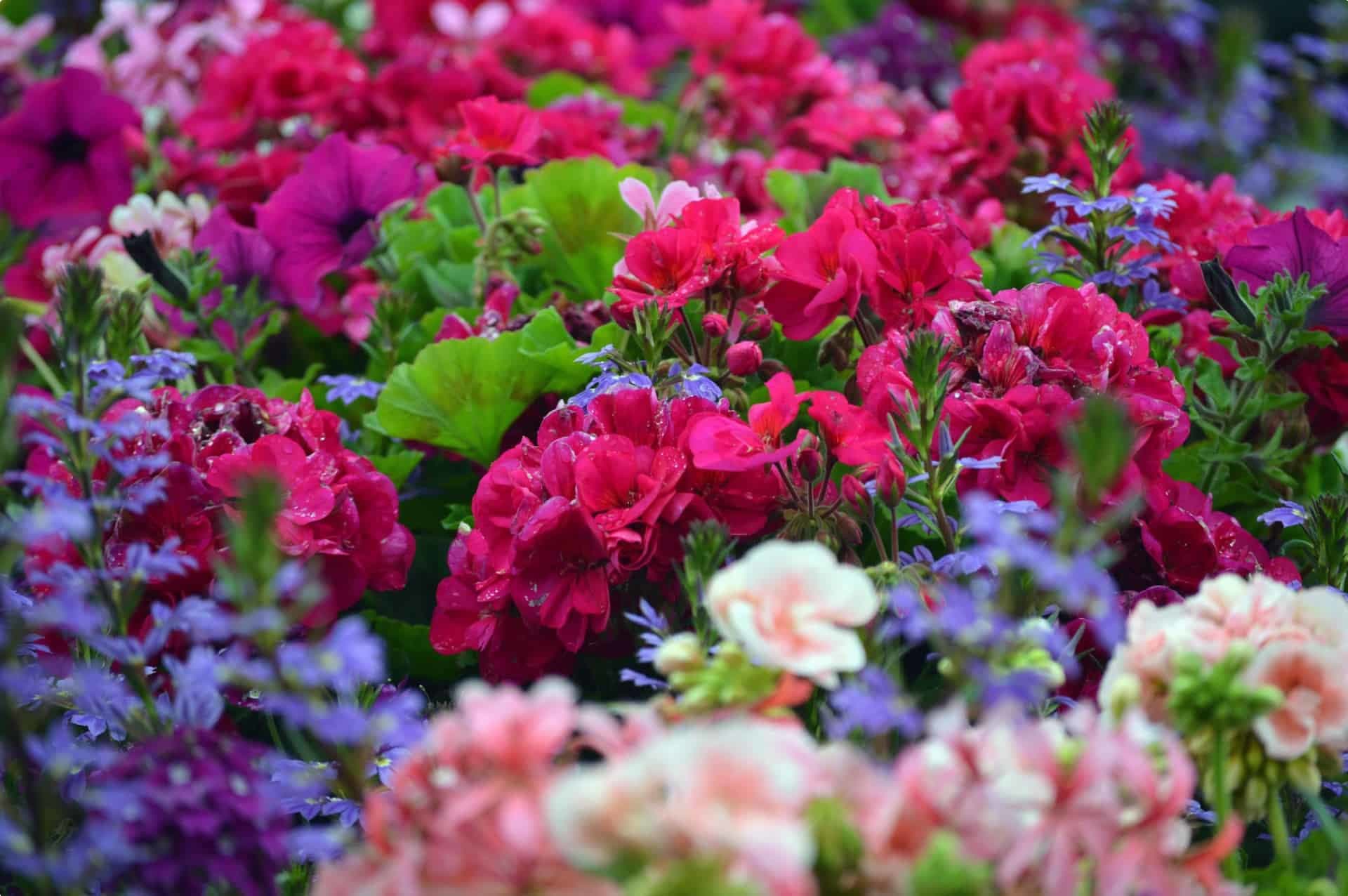
Channel your inner Guernsey
Whether it’s gorgeous flowers, living history or peaceful old world towns, there’s something for everyone in the Channel Islands. Odyssey Traveller organises regular group tours to the beautiful archipelago – book your next holiday today!
Small group tours for seniors
Odyssey Traveller is famous for our small groups, and we average eight participants per tour. Our maximum group size is eighteen people, which ensures quality, flexibility and care that is tailored to our clients. We specialise in small group tours for the senior traveller who is seeking adventure or is curious about the world we live in. Typically, our clients begin travelling with us from their mid 50’s onward. But be prepared to meet fellow travellers in their 80s and beyond! Both couples and solo travellers are very welcome on our tours.
About Odyssey Traveller

Odyssey Traveller is committed to charitable activities that support the environment and cultural development of Australian and New Zealand communities. Accordingly, we are pleased to announce that since 2012, Odyssey has been awarding $10,000 Equity & Merit Cash Scholarships each year. We award scholarships on the basis of academic performance and demonstrated financial need. We award at least one scholarship per year. We’re supported through our educational travel programs, and your participation helps Odyssey achieve its goals.
For more information on Odyssey Traveller and our educational small group tours, visit our website. Alternatively, please call or send an email. We’d love to hear from you!
Related Tours
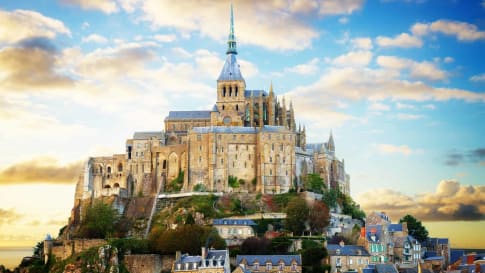
22 days
Apr, May, SepAnglo French Tour | Normandy, Brittany, Channel Islands tour
Visiting Channel Islands, England
Our 21 night program has daily itineraries with plenty of authentic experiences provided by passionate local guides in the key destinations in France, Channel Islands and England for this small group of like minded people. For Solo travellers minimal single supplement applies for this European tour.
From A$18,995 AUD
View Tour
18 days
Sep, MayChannel Islands | A small group walking tour for seniors
Visiting Channel Islands
Another Small group tour of the British isles of the Channel Islands. This fully escorted, small group walking tour, takes the active senior off the beaten path with local guides to Jersey, Guernsey, Alderney, Sark and Herm.
From A$15,535 AUD
View Tour
